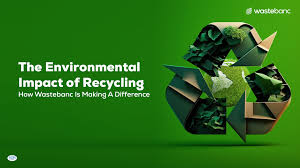Recycling is widely advocated as a crucial strategy for reducing environmental impact and mitigating climate change. One significant benefit of recycling is its potential to reduce our carbon footprint. This critical analysis explores the environmental impact of recycling, focusing on its role in lowering greenhouse gas emissions and providing statistical evidence to support these claims.
A carbon footprint is the total amount of greenhouse gases (GHGs) emitted directly or indirectly by human activities, expressed in carbon dioxide equivalents (CO2e). Recycling can significantly reduce these emissions by decreasing the need for raw material extraction, lowering energy consumption, and reducing waste in landfills, which emit methane—a potent greenhouse gas.
Recycling often requires less energy compared to producing new products from raw materials. For example, recycling aluminum saves up to 95% of the energy needed to produce new aluminum from bauxite ore. According to the Environmental Protection Agency (EPA), recycling one ton of aluminum saves 14,000 kWh of energy, 40 barrels of oil, and prevents 10 metric tons of CO2e emissions.
Similarly, recycling paper saves about 60% of the energy compared to new paper production. Recycling one ton of paper can save up to 17 trees, 26,500 liters of water, and 4,000 kWh of electricity, preventing 1 metric ton of CO2e emissions. These savings highlight the substantial impact recycling can have on reducing energy use and carbon emissions.
Aluminum is a prime example of how recycling can drastically cut emissions. Producing aluminum from recycled materials emits only 5% of the CO2e compared to producing it from raw bauxite. In 2018, the U.S. recycled approximately 3.7 million metric tons of aluminum, which translated to a reduction of around 37 million metric tons of CO2e, equivalent to taking about 7.7 million cars off the road for a year.
While plastic recycling presents more challenges due to contamination and the complexity of different plastic types, it still offers significant environmental benefits. Producing recycled plastic typically consumes about 66% less energy than manufacturing new plastic. For instance, recycling one ton of PET plastic (commonly used in beverage bottles) can save up to 7,200 kWh of electricity, 2 barrels of oil, and reduce CO2e emissions by 1.5 metric tons.
Despite these benefits, only about 9% of plastic waste is recycled globally, leading to substantial environmental losses. Improving plastic recycling rates could vastly enhance its impact on reducing carbon footprints.
Landfills are a major source of methane emissions, a greenhouse gas with 25 times the global warming potential of CO2 over a 100-year period. Organic waste decomposition in anaerobic conditions in landfills produces methane. Recycling organic waste, such as food scraps and yard trimmings, through composting can significantly reduce methane emissions.
For example, in the United States, food waste accounts for about 24% of municipal solid waste. By diverting this waste from landfills to composting facilities, methane emissions can be substantially reduced. According to the EPA, composting one ton of food waste prevents emissions equivalent to 0.3 metric tons of CO2e.
Recycling’s impact on the carbon footprint is evident at both national and global levels. In the European Union, recycling practices saved approximately 191 million metric tons of CO2e in 2019, equivalent to the annual emissions of 41 million cars. These savings stem from recycling metals, paper, glass, and plastics.
In the United States, recycling and composting saved over 193 million metric tons of CO2e in 2018, akin to the annual emissions from 42 million cars. These figures underscore the potential of recycling to contribute significantly to climate change mitigation.
Technological advancements in recycling can further enhance its environmental benefits. Innovations such as chemical recycling for plastics, advanced sorting technologies, and the development of new recycling methods for complex materials can improve efficiency and increase recycling rates. For instance, chemical recycling breaks down plastics into their monomers, allowing for the production of new plastics with the same quality as virgin materials.
Additionally, incorporating renewable energy sources into recycling processes can further reduce the carbon footprint. For example, using solar or wind energy to power recycling plants can cut emissions associated with energy use.
Government policies play a crucial role in promoting recycling and reducing carbon footprints. Policies such as Extended Producer Responsibility (EPR), landfill taxes, and recycling mandates can drive higher recycling rates. The European Union’s Waste Framework Directive sets ambitious recycling targets, aiming for 65% of municipal waste and 75% of packaging waste to be recycled by 2030.
Public participation is equally vital. Education and awareness campaigns can encourage individuals to recycle more and reduce contamination, enhancing the efficiency of recycling programs. Communities with robust recycling infrastructures and active public engagement typically achieve higher recycling rates and greater environmental benefits.
Recycling is a powerful tool in reducing our carbon footprint and combating climate change. By saving energy, reducing greenhouse gas emissions, and minimizing waste in landfills, recycling significantly mitigates environmental impact. Statistical evidence from various case studies and global practices underscores the potential of recycling to make a substantial difference.
However, to maximize its benefits, recycling must be supported by technological advancements, strong policies, and active public participation. As we strive for a more sustainable future, integrating recycling into broader environmental and waste management strategies is essential to achieve meaningful and lasting reductions in our carbon footprint.
Oladosu Adebola Oluwaseun is an environmental journalist and a post-graduate student of the International Institute of Journalism (IIJ).




